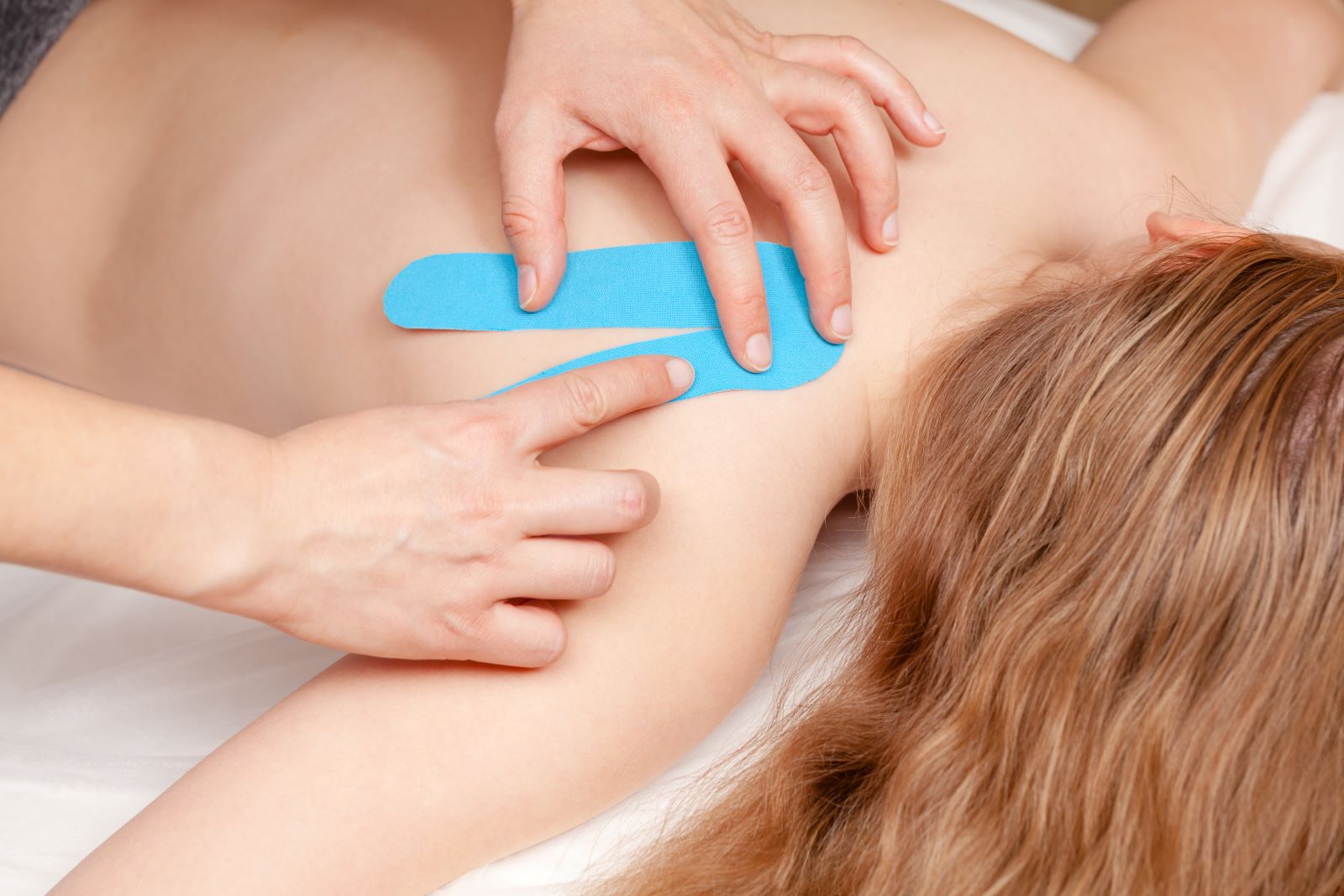At this point, you’ve seen plenty of elite athletes striped with colorful kinesiology tape, also known as KT tape. But can a few pieces of sticky stuff really help treat and prevent injuries?
Turns out, yes. And it’s not limited to athletes.
“Kinesiology tape can be a great tool for any number of muscle and joint issues,” says Juli Deng, DPT. She should know: Deng is a KT tape certified physical therapist at Hartford HealthCare’s Bone & Joint Institute.
Short-term, KT tape helps with pain, swelling and more
KT tape is not a long-term solution, notes Deng. But used correctly, it can help reduce pain, manage swelling, increase circulation and lend extra support to muscles and joints.
“Everyone from athletes preventing sports injuries to older adults recovering from knee replacement surgery can use KT tape,” says Deng. “I’ve used it myself to calm down overactive and sore calf muscles after exercise.”
This isn’t your average tape
KT tape is extra stretchy, quick-drying and breathable. As a result, it moves easily with the body and stays put for three to five days – even after dips in swimming pools and showers.
Just like Band-Aid or Kleen-Ex, Kinesio is a brand name. It was one of the first widely marketed versions of this tape. Since, other brands have created their own, sold under the generic description “kinesiology tape.”
> Want more health news? Text StartHere to 85209 to sign up for text alerts
How exactly does KT tape work?
Plenty of people and medical experts swear by KT tape, but researchers are still studying why it actually works.
In the meantime, here are some theories: Because of how the tape lifts the skin slightly up and away from joints and tendons, it may decrease friction on pressure points and improve the skin’s blood flow. It may also affect how the body and brain communicate about things like pain.
Here are a few of the many uses for KT tape
- Tennis elbow: Relaxes the wrist extensor muscle group.
- After shoulder dislocation: Adds stability to the shoulder to help with healing.
- Knee replacement surgery: Decreases swelling in the leg after surgery.
- Hamstring strain: Activates the glutes to help rest the hamstring.
- After an ankle sprain: Reduces swelling in the ankle.
- Knee pain: Unloads the knee joint and decrease pain.
- Improving posture: Supports upright trunk posture.
- Pregnancy support: Lifts and supports the belly instead of an sacro iliac belt.
Don’t try this at home – at least, until you’ve talked to an expert
“KT tape should be applied by someone who is certified,” cautions Deng. “Or at the very least, someone who’s certified should give you specific instructions for how to apply it yourself.”
Why? It’s crucial to keep an eye on any allergies to adhesive, open wounds or active skin infections.
Plus, a certified expert like Deng or another specialist at the Bone & Joint Institute can guide you to which pattern of tape is best for your problem, whether to use special decompression and stabilization strips, and more.
The only question left: What color will you choose?


